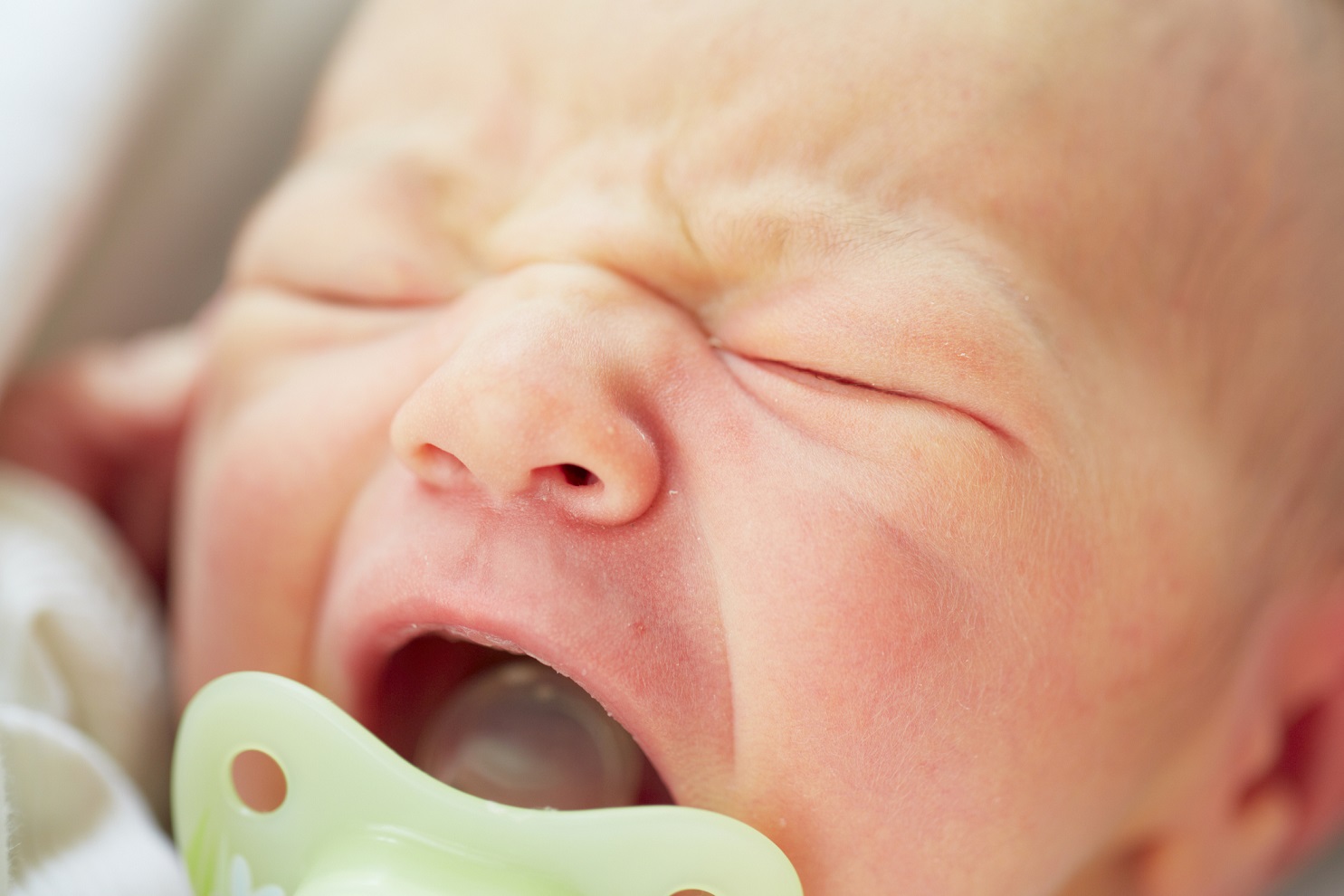Not only infants suffer from colic. Colic is a real challenge for parents, and a true trial of relationships.
I believe it is impossible to fully convey the idea what it’s like to be a parent of a little baby. It’s not possible, because every child is different. And puts their parents’ patience to the test in different ways. There are newborns who can sleep for 16 hours per day. And there are those who can’t sleep for 16 hours at a time (my older daughter). There are infants who just love to be taken for walks in prams and then there are those who start crying at the sight of their pram (my younger daughter). And, finally, there are children who have never had colic, and those who suffered from it (both of my daughters).
No big deal – in theory
Colic is… you want the textbook definition or the truth? Because textbooks tell us that colic manifests itself through continuous crying and occurs between the 3rd week and late 3rd month of life, in afternoons at least 3 times a week, with a total duration of attacks of 3 hours per day. This piece of information is not optimistic, but also doesn’t sound really scary. But in reality…
Crying marathons
During a colic attack your newborn cries and cries and nothing can soothe them, none of the things that calmed them before works. Breastfeeding doesn’t help, quite the contrary – the child lets the breast go, winces, turns away as if feeding was painful for them. She cries so desperately, as if something really bad was happening (but it isn’t). She tucks her legs up, clenches fists, her face turns red and she cries. And you think that they’re going to pop because of this crying. You carry them, hug them, hum melodies, rock – nothing. 10 minutes later (and it feels like 10 hours), the baby is still crying. After 15 minutes you’re starting to panic. After half an hour you believe that the time when your baby wasn’t crying is a mythical past.
Tensions rise
Both of you are getting nervous. Sooner or later this tension results in fights and accusations. “Maybe you’ve eaten something bad for him,” he says. “Maybe you carry him, I can’t do it any longer,” she hisses. After a few longest hours of your life the crying stops, and you’re both exhausted. The situation repeats the following day. And the next day. And again, the day after that. Neighbours look at you with anger or sympathy. Friends say that it will pass. Family is full of good advice. You’re fed up and decide that you’re not going to have any more children.
Unclear causes
Paediatricians all agree that that the person who invents a universal colic remedy should be awarded the Nobel Prize. However, the problem is that no-one is really sure what causes colic. And with unknown causes, finding a solution is difficult.
It seems that colic appears as a result of a number of processes. For sure it appears because of the immaturity of both digestive and nervous systems. For sure it is stimulated when the child senses their parents’ anxiety. And the feeding technique is also important, since the air swallowed while sucking causes painful flatulence. Perhaps there is also a connection between intestinal bacteria and colic. And, most importantly, it has been scientifically proven that there is no connection between colic and the mother’s diet. People used to believe that a breastfeeding mother should avoid eating fried or spicy food, dishes that make her bloated, or that may result in allergic reactions. Nowadays we know that the food mothers eat does not influence the child’s digestive problems. Moreover, breastfed children’s digestive system develops faster than that of children fed with formula.
The plan
Because colic is caused by a number of factors, different solutions need to be applied in every case. Below I’m listing methods thought to be usually, but not always, successful.
If your child suffers from colic, you can:
– make sure that – after each feeding – excessive air has left the small stomach, which means: hold the baby in an almost vertical position, so that they belch);
– if your child eats ravenously, feed them before they are really hungry and in the Australian hold, with the mother lying on supporting pillows, the child on their stomach on the mother’s stomach, with their head near the breast);
– if you’re using the bottle, use a slow-flow nipple with good air venting; take care to always keep the nipple full, make breaks for burping;
– play the white noise produced by Whisbear the Humming Bear. A significant majority of newborns find the sound soothing, calming and relaxing;
– regulate daily rhythm and make sure that afternoons and evenings are peaceful and calm, the time when stimuli are slowly muted. Cover windows, turn off the TV and radio. During the colic period avoid inviting guests or changes in the environment.
– Carry your child in a sling. Sling babies suffer from colic less often, are calmer and sleep better. The stomach-to-stomach position warms up and relaxes the digestive tract’s smooth muscles, which, in turn, helps to avoid painful bowel cramps.
– carry the baby in the “airplane” hold. In this case the larger and usually stronger dad’s arm is useful: the baby lies on the forearm, stomach down, with legs and hands on both sides of the forearm and the head resting on the palm, with the head higher than the bottom);
– when they are not sleeping, and always overseen, lay the baby down on their stomach. Lying on stomach and raising the head helps get rid of gases;
– take the child, sit with them on a large, air-filled ball and rock;
– regularly each day, but not during a colic attack, conduct a stomach massage.
– after the massage, or independently of it, use a rectal catheter – carefully irritate the child’s anus with the soft end, which helps get rid of gases);
– buy an anti-colic product at the chemist’s. But don’t use all of them at one time! Some herbal preparations are based on fennel (sometimes mixed with other herbs), simethicone or dimethicone, with beneficial probiotic bacteria. Use one product; if after a few days it turns out it doesn’t work, use another. Always carefully read the ingredients and information about doses.
– take care of your emotions and regenerate, because infants are very good at sensing their parents’ anxiety and may react by crying.
Calm after the storm
Every colic ends. It may continue until the end of the 3rd, sometimes 4th or 5th month of life. In itself, it is not dangerous for children. It would seem waiting it out is the best solution.
Well, not really. For two reasons, try as hard as you can to help your child when they suffer.
Firstly, anxiety, stress and crying always require a reaction, the child must feel that parents respond to their needs, take care of them, that they are always there for him or her. Especially when the child’s nervous system is so strongly stimulated, they must be soothed by their parents.
Secondly, this period is important for you, the parents, and for your relationship. You see how well you work together, how you can count on and support each other. You’re still learning the ropes of being a father or a mother and you have to feel that you’re dealing with it. It is important to do everything you can to ensure that instead of hopelessness, this period is full of trust, security and strength.













